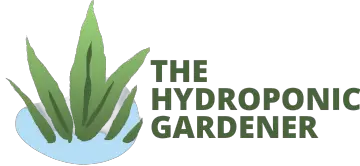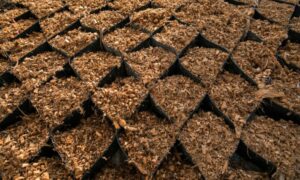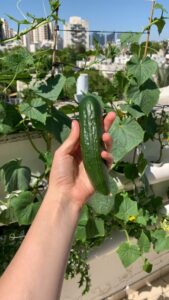Coco coir is a sustainable, renewable grow medium that offers superior aeration and drainage for healthy root development. With this guide, you’ll learn everything you need to know about coconut coir to get the most out of your hydroponic garden.
This guide has everything from choosing the right type of coco coir for your needs to proper maintenance techniques! So let’s dive in and explore why coco coir should be your first choice when growing with hydroponics.
What is Coco Coir?
Coco coir, also known as coconut fiber, is a renewable and sustainable grow medium made from the husks of coconuts. It’s an ideal hydroponic alternative to traditional potting soil and other synthetic grow mediums.
In addition, coconut coir can be reused multiple times with proper maintenance, which makes it an economical choice for growers. This means you can use your coconut coir for one season or cycle of growth and rinse it out with dechlorinated water, then reuse it the following season. This makes organic matter a renewable resource that reduces waste while still getting great results.

The Benefits of Coconut Coir as a Grow Medium
Coconut coir is an excellent choice for growers who want healthy, thriving plants. Here are some of the benefits of coco coir as a growing medium:
1. Superior aeration and drainage: The coco chips create air pockets, making coco boast of superior aeration and drainage properties. This allows roots to breathe and grow freely. This translates to better yields.
2. Neutral pH: Coco coir has a pH range of 5.5-6.5, which is ideal for most plants. As a result, it’s easy to adjust the pH for specific plant requirements, ensuring optimal growth.
3. High water holding capacity: Coco coir can hold up to 10 times its weight in water, ensuring that plants can access water and nutrients even during dry spells. This is an enormous advantage, especially for gardeners in dryer regions.
4. Reusable: Unlike traditional soil grow mediums, coconut coir is reusable, making it an environmentally-friendly, cost-effective option for growers. After drying it out, it’s easy to rinse with dechlorinated water, making it even simpler to maintain.
5. Resistance to pests and disease: Coco coir is resistant to pests and diseases that commonly affect soil grow mediums. This helps to prevent the spread of disease and pests in hydroponic gardening.
6. Easy to use: Coconut coir is lightweight and easy to handle, making it convenient for growers to transport, store, and use. It also does not require any special equipment for preparation or use.

How To Prepare Coco Coir for Hydroponic Gardening
Select Quality Coconut Coir
When choosing coconut coir, look for a high-quality product that has been processed and packaged properly. Ensure that the coco coir is free of contaminants, such as sand or other debris, which can affect its performance as a growing media. Additionally, it should be rinsed thoroughly with fresh water to remove residual salts or other substances.
Choose the Right Containers
To prepare the coconut coir for use, place it in a large container to accommodate the amount you need for your hydroponic system. Then, add warm water to the container, ensuring enough water to cover the coconut fibers completely. The water should be at least twice the volume of the coconut coir to allow for proper hydration.
Let It Sit For 30 Minutes
Allow the coco coir to soak in the water for at least 30 minutes, occasionally stirring to ensure it absorbs the water evenly. During this time, it will expand and absorb the water, becoming more pliable and easier to work with.
Drain the Excess Water
Once the coco peat has soaked for the appropriate amount of time, drain the excess water from the container. Squeeze it gently to remove as much water as possible, being careful not to over-squeeze it, which can damage the fibers.
Rinse Your Coco Coir
Rinse the coco peat with fresh water to ensure you have removed any remaining impurities and that your growing media is clean. This will help to remove any residual salts or other substances that may have been left behind during the soaking process.

Why Should You Add Nutrients to Coco Coir?
While coconut coir may provide many benefits as a growing media, it is not a complete growing solution on its own. It does not contain any inherent nutrients, so it is crucial to supplement it with nutrients to support plant growth. This is what you need to add:
- Nitrogen – Nitrogen helps produce chlorophyll and other essential plant proteins, aiding in photosynthesis, enabling plants to convert sunlight into energy.
- Phosphorus – Plants need phosphorus to help create key enzymes and proteins necessary for healthy root, shoot growth, and fruit production.
- Potassium – Potassium helps with essential activities such as photosynthesis, water regulation, and protein synthesis. It also helps build stronger cell walls and accelerates the growth process.
- Calcium – helps in cell wall formation and strengthens the structural integrity of stems and roots, helping them withstand environmental stresses. It also helps regulate nutrient uptake, contributing to overall plant health and growth.
- Magnesium – is essential in creating chlorophyll and other vital plant proteins, allowing them to convert sunlight into energy more efficiently. Additionally, it’s an important photosynthesis component.
- Other essentials you need to add include sulfur, iron, copper, manganese, and zinc.
Now that you know what to add to your coconut coir, let’s explore some of the best plants to grow in coco coir.
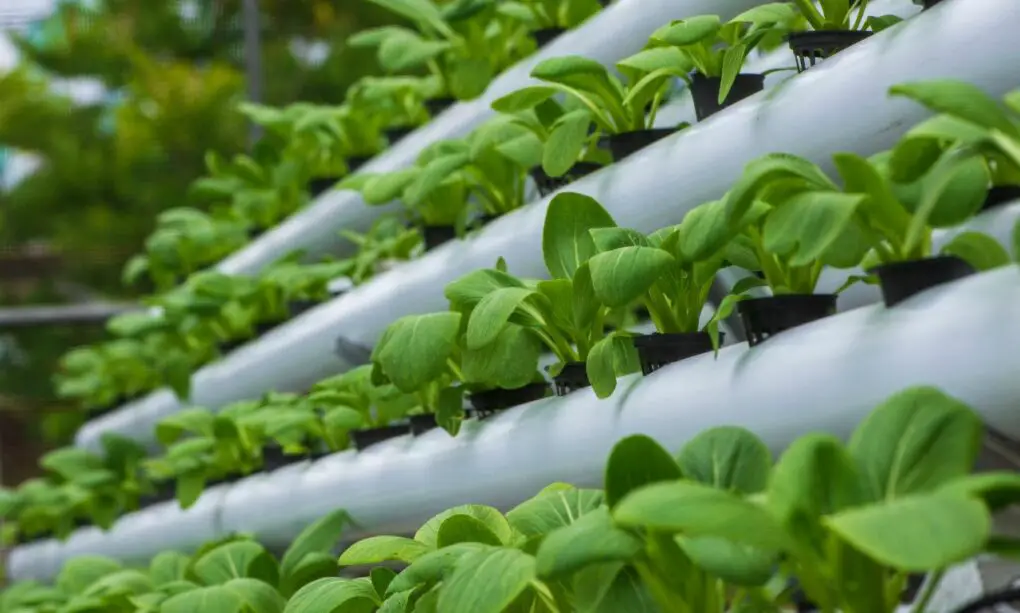
Plants You Can Grow in Coconut Fiber
Coco coir is a great choice for many plants and vegetables thanks to its ideal moisture retention and aeration level. From tomatoes to strawberries, there are plenty of plants you can grow with coco coir:
Tomatoes
Tomatoes are a popular choice for hydroponic gardens, and they thrive in coconut coir due to its excellent water retention properties. The high porosity of coco coir also allows for good air circulation, which helps to prevent the roots from rotting and other soil-borne diseases.
Peppers
Like tomatoes, peppers benefit from the medium’s excellent water retention and porosity. Peppers are also less susceptible to pests and diseases when grown hydroponically.
Lettuce
Lettuce has shallow root system and prefers consistent moisture levels. Coconut coir provides good drainage and aeration, making it a perfect medium for this plant.
Cucumbers
Cucumbers do well in coconut coir because they hold moisture and provide good aeration. Cucumbers also require plenty of essential which can be easily provided in hydroponic systems.
Herbs
Many herbs, such as basil, mint, and parsley, thrive in coconut coir. Herbs also tend to have shallow root systems, making them well-suited to hydroponic gardens.
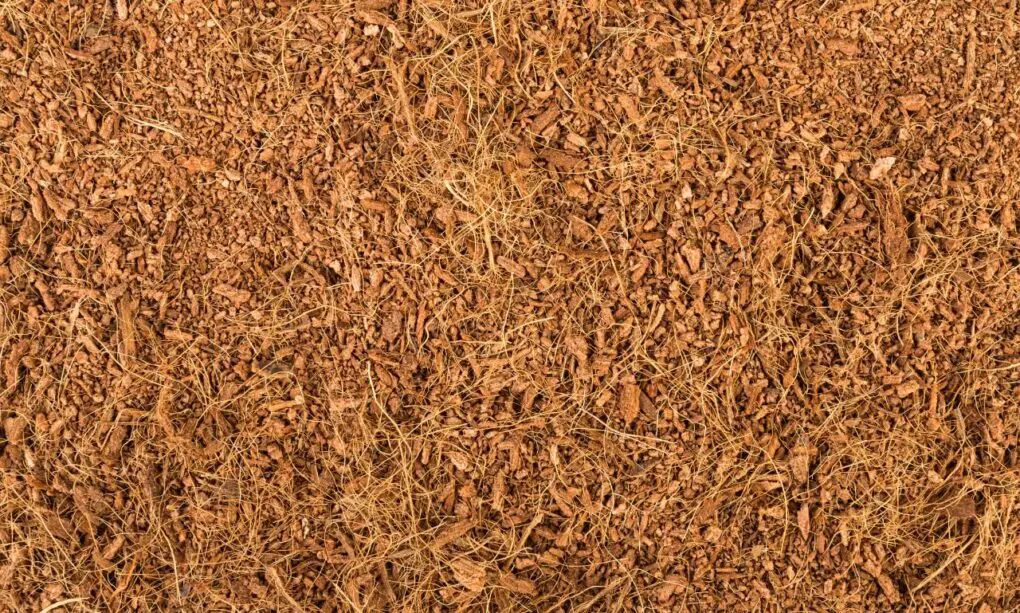
How Often Should You Flush Coco Coir and Why?
Flushing is essential when growing plants in coco coir, just like any other grow medium. Flushing coco coir means running plain PH-balanced water through the substrate to remove any excess salt content.
Flushing coco coir regularly during the growing cycle is essential since salt build-up can negatively affect nutrient uptake and harm plant growth.
The flushing frequency depends on the specific nutrients and fertilizers, plant species, and environmental conditions. As a rule of thumb, flush coconut coir every two to three weeks for mature plants.
How To Flush Coco Coir
- Get clean, pH-balanced water
- Pour the water evenly over the entire surface of the coco coir, ensuring that the mixture is thoroughly soaked
- Allow the excess water to run off
- Check the coco coir substrate’s pH to ensure it is within the correct range for the specific plant being grown. The recommended pH range for coco coir is usually between 5.5 and 6.5, but it is always best to check the recommended pH range for individual plants.
Is Coco Coir Better Than Soil?
Coconut coir is becoming increasingly popular among gardeners and farmers as a growing medium due to its many benefits. One of the most commonly asked questions is whether coco coir is better than garden soil.
Coconut coir offers several advantages over traditional soil-based growing. For one, coco coir is entirely organic and sustainable, made from the fibrous husks of coconuts. Unlike soil, which can contain harmful pathogens and pests, coco coir is free from these issues, making it an excellent choice for those seeking a safer, healthier growing medium.
Another benefit of coco coir is its high water retention capacity. As previously mentioned, coco coir holds moisture for longer periods, making it an ideal medium for plants requiring consistent moisture. This feature also allows for good aeration, which promotes healthy root growth and prevents root rot, a common problem associated with overwatering in soil.
Coco coir is also a soil-less medium, meaning it is hydroponic-friendly. Hydroponics is a growing method that relies on water and nutrient solutions rather than soil. Coco coir is an excellent alternative to soil in hydroponic systems because it provides excellent water retention and drainage properties.
Additionally, coco coir can be reused several times, making it cost-effective in the long run. Unlike soil, which can become depleted of plant essentials over time, coco coir retains its structure for much longer.
Coco coir offers many benefits over traditional soil-based growing, such as organic and sustainable material, high water retention capacity that allows for good aeration, and hydroponic-friendly properties. It can be reused several times, making it cost-effective in the long run. However, growers must supplement their coco pith with a balanced nutrient solution to ensure their plants receive all that’s needed.
FAQs
What are the benefits of using coco coir as a hydroponic growing medium?
Coco coir can help plants grow. It holds a lot of water, and it drains well. It is made from natural materials and can be used again. In the long run, this makes it a good choice because it is not too expensive.
Is coco coir sustainable and environmentally friendly?
Yes. Coco coir is considered a sustainable and environmentally friendly option by many because it’s made from a renewable resource and is biodegradable.
